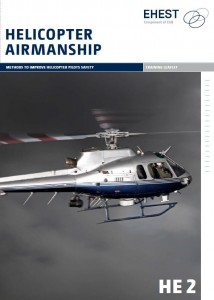
This leaflet deals with Airmanship in helicopter operations.
Airmanship is defined by EASA Part FCL as: “The consistent use of good judgement and well-developed knowledge, skills and attitudes to accomplish flight objective”. The EHEST analysis of helicopter accidents occurred in Europe between 2000 and 2005 revealed 140 General Aviation accidents. The report identifies the following major factors:
- Pilot decision making and risk assessment,
- Mission Planning,
- Pilot misjudged own limitations/capabilities, overconfidence,
- Pilot inexperience,
- Inadequate consideration of weather/wind,
- Failed to follow procedures,
- Pilot control/ handling deficiencies,
- Failed to recognise cues to terminate current course of action or manoeuvre,
- Inadvertent entry into IMC, vision restricted by meteorological conditions,
- Wilful disregard for rules and SOPs,
The majority of these factors are related to airmanship.
Comprehensive knowledge, careful pre-flight preparation, frequent flying practice and complacency avoidance are powerful accident prevention measures.
Downloads
Get notified via email alerts
Stay informed when this page is updated, or when we publish new content like this. You can always unsubscribe or update these settings later on.


